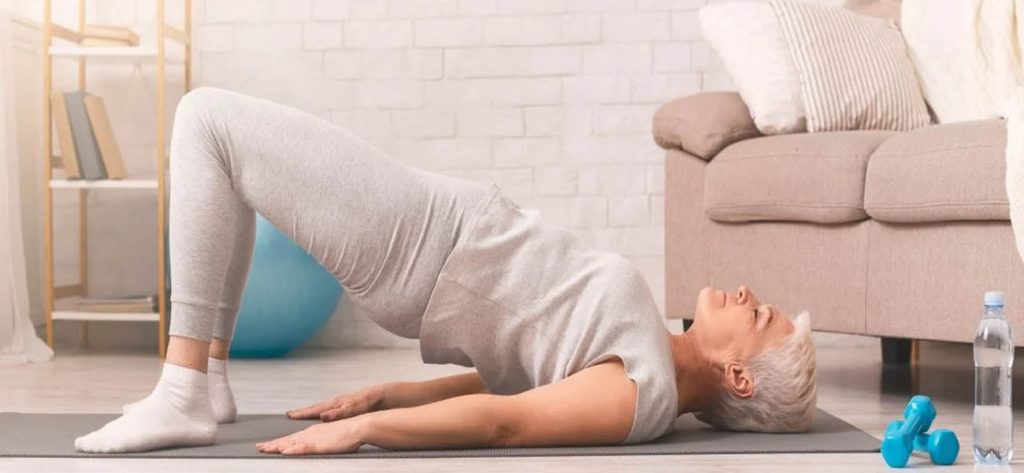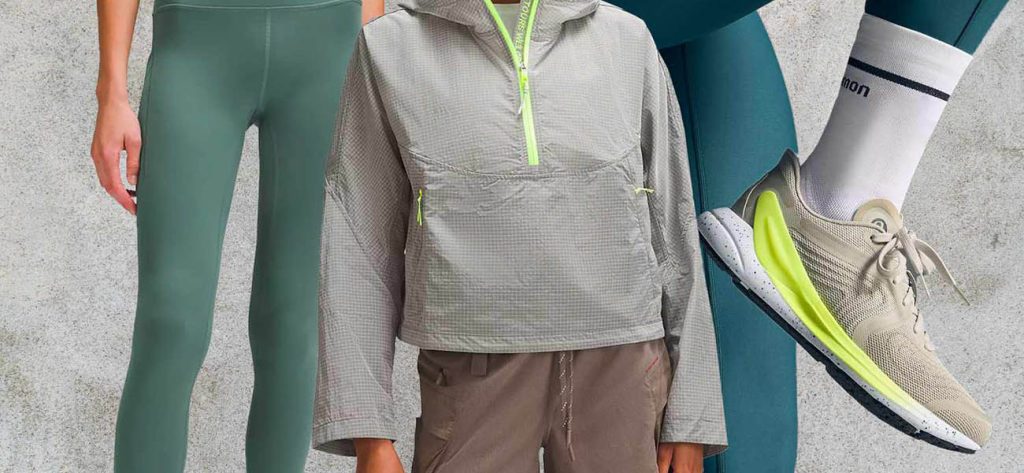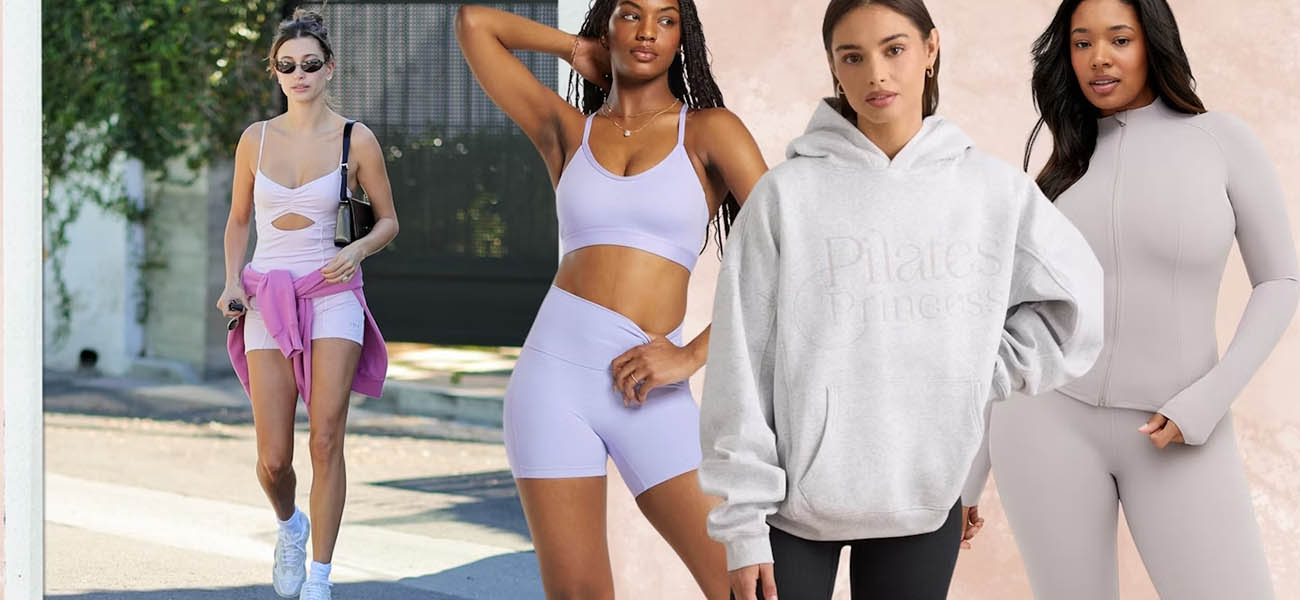I don’t only focus on makeup and outfits; I also pay great attention to health and body care. Pilates, a widely popular exercise, not only shapes your body but also enhances flexibility and strength. Therefore, selecting a set of clothes that are both fashionable and comfortable is crucial to the effectiveness and experience of your Pilates workouts. Today, I will share with you how to choose the right Pilates clothing, the benefits Pilates brings to your body, and how to develop a reasonable Pilates practice routine.
1. What to Wear for Pilates Workouts?
When doing Pilates, wearing the right clothes can help you perform exercises more effectively and enhance the overall workout experience. Pilates focuses on precise control and breathing to enhance the body’s stability, flexibility, and strength. Therefore, your outfit should balance comfort, functionality, and aesthetics to ensure you can move freely and avoid unnecessary constraints during your practice.
Choosing the Right Fabric
First and foremost, the fabric you choose is essential. Pilates involves a lot of stretching and bending movements, so your clothes should be made from materials that offer good elasticity. Common workout fabrics, like polyester and spandex, have great elasticity and breathability, allowing for free movement while keeping your skin dry. These materials are also durable and resistant to deformation, making them ideal for frequent use in high-intensity workouts.
Comfortable Fitted Clothing
Pilates movements often require good posture and positioning, so it’s important to wear comfortable, fitted clothing. Fitted athletic wear hugs your body more closely, helping you control movements more precisely while preventing your clothes from interfering with your workout. A supportive sports bra is also a must, especially for those with fuller busts. A well-fitting sports bra not only provides sufficient support to minimize bouncing but also ensures comfort.
Breathable Pants
Since many Pilates exercises are performed on the floor, your choice of pants is key. A high-elasticity workout pant, particularly yoga pants, is an excellent choice. These pants support your leg muscles while providing plenty of freedom to move. If you’re new to Pilates, opt for pants with a high-waisted design for added comfort and better support around the waist.
Appropriate Footwear
Pilates often involves exercises done barefoot, so you don’t necessarily need specialized shoes. However, if you prefer wearing shoes, choose lightweight, comfortable footwear that offers good grip. Pilates shoes are typically designed to be simple and focus on support and comfort, providing stability during balance and support movements.
2. What to Wear for Home Pilates Practice?
When practicing Pilates at home, you need to choose an outfit that is both comfortable and flexible. After all, home workouts require clothing that not only suits the exercise but also meets the standards of daily comfort and style. A sporty outfit set is ideal because it fulfills both your workout needs and allows you to look stylish during everyday activities.
Soft, Comfortable Fabrics
Choosing soft, breathable fabrics is crucial, especially for home practice. Comfort is the most important consideration here. Natural fabrics such as cotton and bamboo fiber are soft to the touch and have great breathability, making them effective at wicking away sweat and keeping you dry. Whether it’s yoga pants or workout shorts, cotton fabric will ensure you’re comfortable during Pilates exercises without feeling restricted.
Elegant and Simple Design
Home Pilates clothing doesn’t need to have overly complicated designs. Simple, elegant styles can fulfill both your exercise needs and daily wearability. For example, a well-fitted T-shirt or a sleeveless top can be paired with high-waisted yoga pants. This combination highlights your body’s curves while providing enough room for movement. For winter practice, you can add a lightweight sports jacket to keep warm without sacrificing flexibility.
3. What Are the Benefits of Pilates for Your Body?
Pilates is not just an elegant exercise; it has significant benefits for your body. Whether it’s improving flexibility, building muscle strength, or enhancing posture, Pilates is an ideal exercise for overall health.
Strengthening Core Muscles

The core is the foundation of Pilates training, and a strong core directly impacts your posture, stability, and overall performance. Pilates exercises target the muscles in your abdomen, back, and hips, enhancing your body’s stability. Strong core muscles help you maintain balance and reduce the risk of injury during other activities.
Improving Posture
Long hours of sitting or standing often lead to poor posture, but Pilates exercises can help improve this. By deep stretching and adjusting the body, Pilates strengthens your back muscles, enabling you to maintain better posture when standing or walking. This improvement in posture can prevent shoulder, neck, and back pain caused by bad posture.
Increasing Flexibility
Flexibility training is a key feature of Pilates. The stretching and muscle relaxation exercises improve the range of motion of your joints and reduce the risk of injury. Whether it’s yoga-inspired moves or Pilates-specific exercises, they all contribute to increasing flexibility, making you more agile and able to move freely.
Boosting Circulation and Metabolism
Pilates not only works out various muscle groups but also incorporates breathing techniques that promote better blood circulation and enhance metabolism. As you progress with your practice, you’ll notice your body becoming more energetic, and your skin appearing smoother and healthier.
4. How Often Should You Practice Pilates?
The frequency of Pilates practice depends on your personal goals and fitness level. For beginners, practicing two to three times per week is an ideal starting point. If you want to enhance core strength and flexibility further, you can gradually increase your practice to three to five times a week.
Recommendations for Beginners
If you’re new to Pilates, start with the basics and practice two to three times a week. You can attend Pilates classes or follow online tutorials. Focus on precision in each movement and avoid overexertion or incorrect posture that could lead to injury.
Recommendations for Intermediate Practitioners
Once you’ve mastered the basic Pilates movements and want to take your practice to the next level, you can increase the frequency and intensity of your sessions. You can also combine Pilates with other forms of aerobic exercise to improve your overall fitness.

5. Recommended Pilates Wear Brands
When selecting Pilates clothing, the following international brands are highly recommended for their combination of comfort, functionality, and style:
- Lululemon: Known for their comfortable, breathable, and stretchy activewear, Lululemon’s yoga pants and sports bras are favorites among Pilates enthusiasts.
- Athleta: This brand is renowned for high-quality activewear suitable for various workouts, including Pilates and yoga.
- Alo Yoga: Alo Yoga’s modern and stylish designs offer comfort and functionality, making it perfect for Pilates practice.
- Fabletics: Offering a wide range of stylish workout outfits, Fabletics is perfect for Pilates, yoga, and other low-impact exercises.
Pilates is a highly beneficial exercise for overall health. It strengthens the core, improves posture, enhances flexibility, and boosts circulation. Choosing the right Pilates wear can make your workout experience more comfortable and enjoyable, allowing you to move freely and confidently. I hope the tips shared in this article help you find the perfect Pilates outfit and encourage you to experience the numerous benefits Pilates offers for both your body and mind.
Tags: Athleta, Lululemon, Pilates